Easter eggs decoupage technique
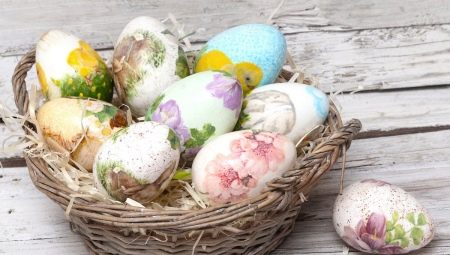
The Easter egg is both a ritual food and a ritual souvenir for Easter. To decorate the festive table, take note of the decoupage of Easter eggs. How to do everything correctly, the master class on decorating eggs will tell you. Study this technique carefully, and then you will get real pleasure from the work done, and your guests - wonderful gifts.
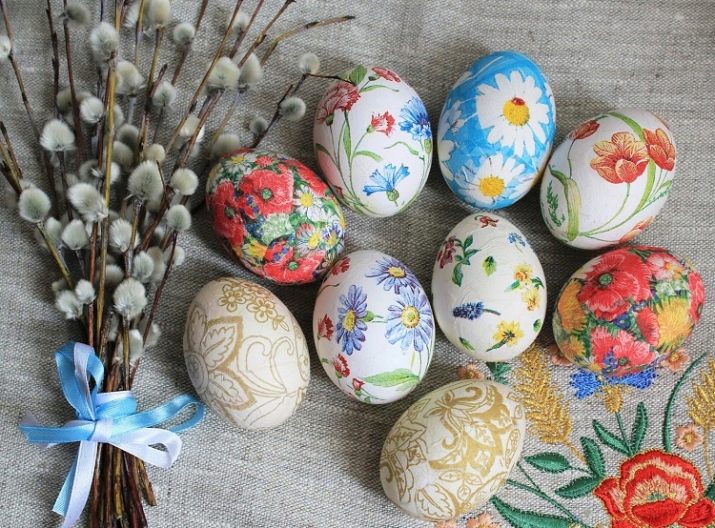
Features of technology
When celebrating Easter, it has become a tradition to put painted eggs on the festive table. According to the ancient traditions of the Slavs, the egg has always been a symbol of the birth, prolongation of the clan and an obligatory component of the holiday of the Resurrection. According to legends, eggs for the holiday have been painted and painted on since ancient times.
Decoupage is one of the new and exciting ways to get colorful and original Easter eggs. Ordinary chicken eggs decorated in this style will make the holiday much brighter. In this case, the classic applique is decoupage. Various patterns are pasted onto the object to be decorated, and then the resulting image is painted with a colorless varnish in order to preserve the picture.
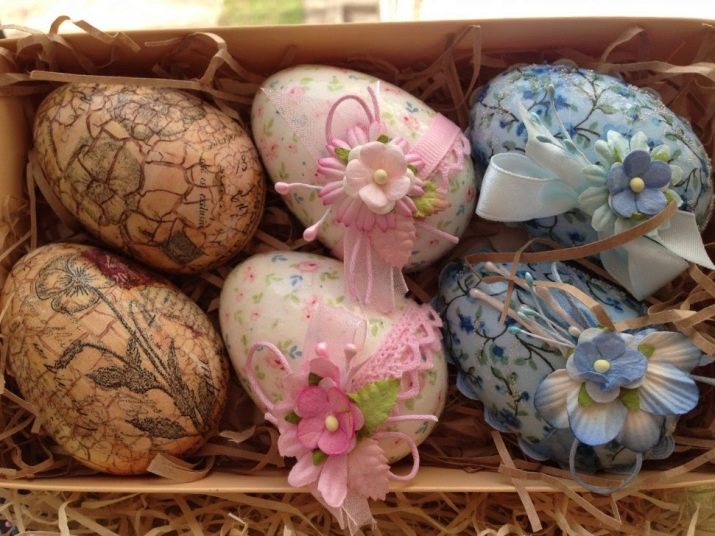
In any shopping center you can find napkins that will be used in decoupage. Techniques are available to anyone who wishes to beautifully decorate the table for the celebration, making it colorful and more fun. Original decorated eggs for Easter will delight relatives and friends at a lighted celebration. The master class will help and tell you what to do.
There are many ways to decorate Easter eggs using decoupage. The object for gluing, in our case, will be an egg - a real one or a dummy.
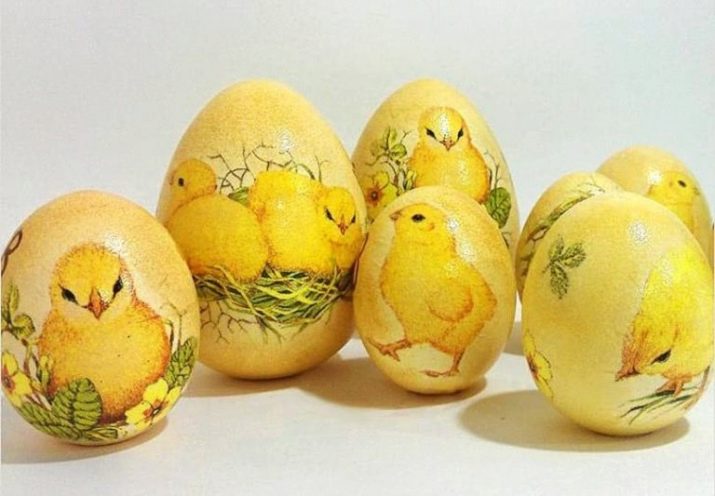
If you plan to serve this sign of celebration, beautifully decorated in the decoupage style, then, of course, no need to use superglue to fix parts of the napkin fragment... Instead, an ordinary egg white is used, which has a good adhesive quality. Also, there is an additional option - use starch-based glue.
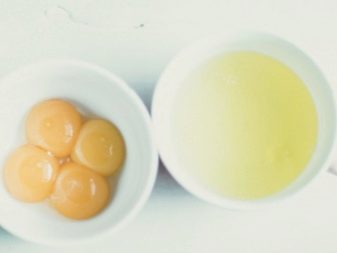
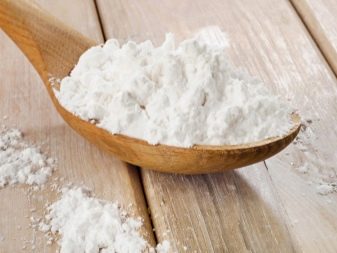
Various napkins for decoupage eggs for Easter are used. It is possible to use both simple single-layer and special, multi-layer. Fragments from napkins and drawings are cut out with scissors, it is more correct to use small nail scissors in this case.
Along with cutting out details in decoupage, hand-pulling is also used - various fragments of the pattern are torn off with the help of fingers, then the edges of these pieces will be more "blurred" and effective when shading.
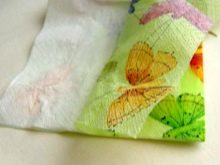
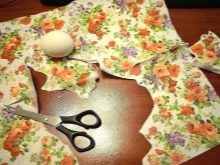

As for the selection of pictures, pictures with colorful flowers and spring themes look great. You can take various leaves, feathers of birds, images of animals as a basis for applications - everything, without exception, that you like. For children, choose the appropriate drawings.
In order to achieve a beautiful result, you need to show your imagination as much as possible.
Materials and tools
If you want to make Easter eggs using decoupage technique on a festive table, you will need the following tools and materials:
- brushes;
- scissors;
- beautiful napkins;
- water-based glue;
- hard-boiled or empty egg.
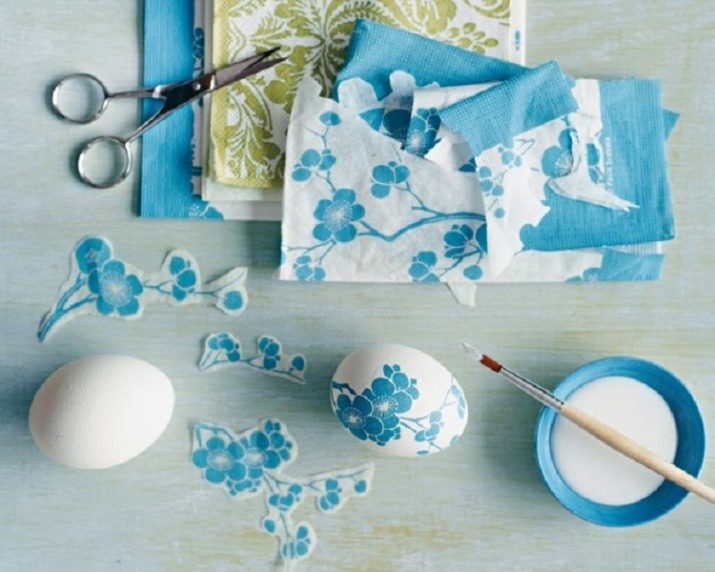
We only need the top layer of the napkin. You will need to cut or or pluck out the drawing that you like. Then apply the glue to the surface with a brush and apply the applique. The next layer is applied in the same way - everything should fit snugly. Continue until the egg looks smooth.
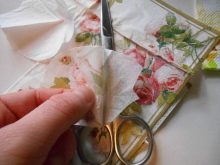
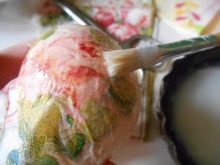
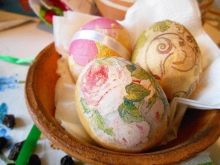
If you want to do something unusual, you can take other materials, for example:
- lace;
- threads;
- stones, sparkles, rhinestones;
- twigs;
- expensive fabric;
- Natural flowers.
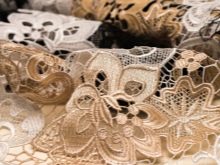
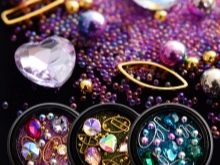
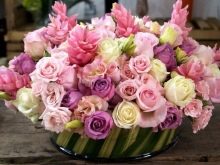
You can tie the egg with a decorative loop made of thick threads and give it to the guest as a gift. Such a gift will be unusual and stylish. Stones or sequins can be used as accents in the eyelet or at the top of the shell.
Another option for a stand for gift eggs is nests made of wooden twigs... To add brightness and splendor, you can use brocade, silk, velvet in the decor, or you can decorate the nest with fresh flowers.

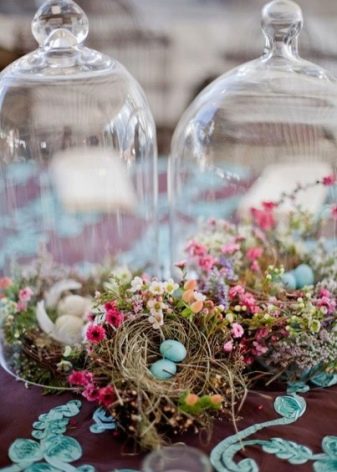
Easter egg glue
To work with Easter eggs in the decoupage style, you can make egg white glue. This is the simplest recipe for harmless glue.
Separate the egg white from the yolk, add 1 tablespoon of sugar and whisk lightly together. Avoid the formation of thick foam, as the formation of bubbles will interfere with work - they can be under the material, which will lead to a decrease in the quality of the craft.
Next, do all the same operations with pasting the pictures that were described above. Apply the glue to the egg twice: before and after the application. Wait until it dries completely, repeat again, let it dry completely.
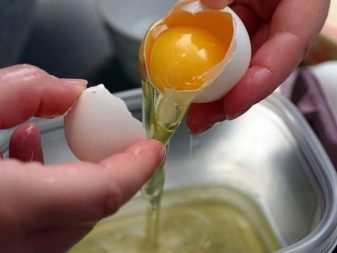
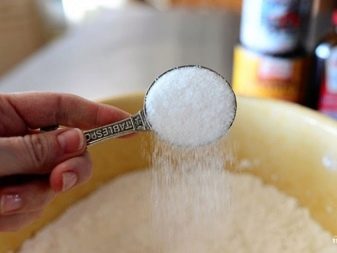
If you decorate eggs for Easter only for room decoration (not for food), then you can use almost any glue.
What kind of eggs can I use?
To work in the decoupage style, you can use boiled eggs, wooden and plastic blanks, hollow shells. remember, that for boiled eggs that are intended for food, only protein glue is used and no paints are used, as they will penetrate the shell.
If you paint a wooden blank, you should first paint it with white acrylic paint. And the empty shell must be washed in advance and dried thoroughly.


Decorating workshops
We decorate an Easter egg with our own hands in the decoupage style for Easter.Let's take a look at a few techniques using different blanks, materials and ingredients.
Gelatin and protein
For this option, we take natural raw materials: protein and gelatin. In this case, the egg white will be both glue and varnish at the same time.
Step by step guide.
- We dilute gelatin in water, let it swell. Then melt in a water bath in a small bowl.
- We tear the napkin into various fragments. We define the drawings with which we will work - various flowers, birds, patterns. As a rule, multi-layer napkins already have a colorful ornament, therefore we tear out the necessary parts from the napkin with our hands and only then separate the top layer we need from the rest. The applications should be small, because when gluing them to a rounded configuration, wrinkles can form, and if they are small, they will not be noticeable, but large ones can significantly spoil the appearance of the decorated egg. We tear out the fragment carefully, because the more correctly we perform this procedure, the more effective the drawing will look on the egg.
- With a wide brush, apply gelatin glue to the surface of the egg, apply a fragment and cover it with a layer of glue on top. In order to easily smooth out wrinkles, we impregnate the napkin with glue. Apply selected parts from a napkin, smooth out the wrinkled parts and leave to dry.
- When dry, the glue adheres tenaciously to the shell. The egg will be slightly sticky for a while.

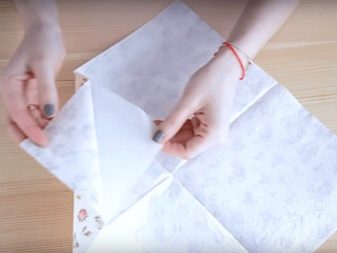

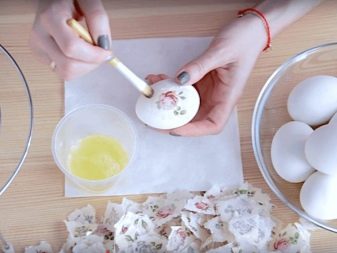
For egg white glue, the procedure is the same. We break a fresh egg, separate the white and yolk into different bowls. And we use the protein both as glue and as a varnish to cover the eggs at the last stage of the work.
After drying, we put the ready-made fakes in beautiful Easter baskets to present to relatives and friends.
Hollow shell
For decoupage work with a hollow shell, you need napkins with drawings, PVA glue, acrylic paint and varnish, a wooden stick, scissors from a manicure set, a brush with flat bristles.
We take a fresh egg, pierce small holes from below and above with a needle, blow out the contents. When the egg liquid is removed, dry the shell a little. First of all, before starting work, insert a wooden stick into the shell. Apply a white tone of paint with a brush and let it dry, provided that the shell is not white; with a white shell, the egg does not need to be painted.
Cut out the required parts. We dilute PVA glue with boiled water in a ratio of 3: 1, glue parts of the napkin on the blank. We apply the prepared solution with careful smoothing movements from the middle to the edges of the picture. When the glue is dry, apply a few more layers of glossy varnish to complete the work. Important: a new layer is applied only when the previous layer is completely dry.
At the last stage, you need to remove the stick from the shell, and so that the needle punctures are not visible, the place is painted over with paint or a layer of varnish.
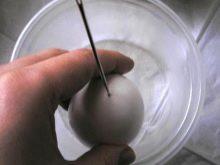
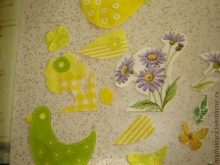

Decoupage napkin
The shell can be covered entirely with a decoupage napkin. To do this, cut out a quadrangle from the napkin equal to the volume of the egg. Fold the rectangle in half and create a fringe around the edges. Then we apply PVA glue to the workpiece, first of all glue the place along the fold of the napkin, and then carefully glue the terry, first from one edge, then from the other.
We cut off the excess napkin and cover the entire volume of the workpiece with a layer of glue. For maximum durability, we paint with a colorless varnish, which is usually used for manicure.


Wood blank
To decoupage a wooden blank, sandpaper with coarse and fine dusting, primer containing acrylic, varnish, paint, glue, which is necessary for working in the decoupage style, a small but wide brush are used.
First, the plane of the wood block must be sanded with sandpaper, first of all large, then fine.Next, the workpiece is covered with an acrylic-based primer (you can make a batch of PVA glue, water, paint in equal proportions), then it is dried.
After priming, several layers of white acrylic paint are applied to the blank and left to dry completely. The necessary fragments are cut from the napkin, then the top layer of the napkin is separated.
Large parts should be divided into small ones so that the applique fits flat on the surface.
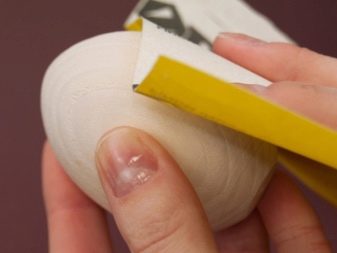
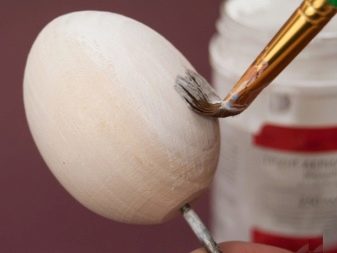
The next step is to apply the thinnest layer of glue. Then carefully take the desired part, apply it to the workpiece, stick it, brushing it from the center to the edge of the part, and then let it dry.
If you want to add expressiveness to the picture or to highlight the image with another line, then continue painting the object. Taking the attached image as a base, add a shadow in some place, in another, on the contrary, add highlights.
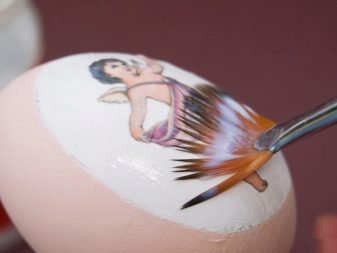
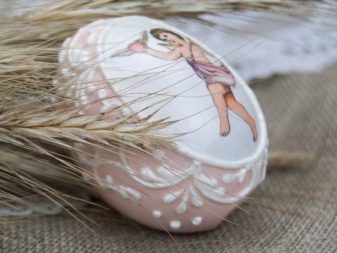
Craquelure
If you want to make semi-antique Easter eggs, master the technique of decoupage with craquelure. Craquelure means cracking Is a unique technique that will give the egg the entourage of a valuable object covered with a tsek. Initially, cracks formed in the thickness of the glass due to temperature fluctuations were considered a flaw. But over time, the manufacturers were able to appreciate the beauty of such a defect, and since then there has been a technique for artificially producing cracks. This technique has become an indicator of the uniqueness of vases, salad bowls or other interior items and dishes.
Easter eggs with cracks (crackle) look fashionable and non-standard, and it is very easy to achieve such a result. You need to purchase foam eggs or wood blanks, decoupage varnish and a special craquelure mixture.
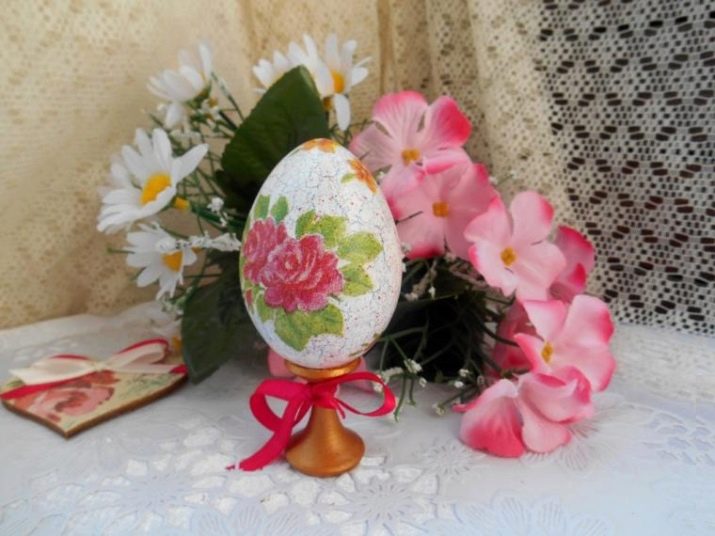
First you need to paint the egg with acrylic paint in the main tone - take the dark one as a basis. Let the egg dry, then apply a translucent silver varnish, then dry again. The craquelure structure should be applied with a thick layer of 2 to 4 millimeters, it dries instantly and the result appears immediately - an egg for Easter in decoupage style with cracks is made.
In the absence of special glue when working with decoupage technique, dilute PVA superglue with water. Next, take a dark acrylic and paint over the empty spaces among the pasted parts. Dry and cover the egg with acrylic varnish.
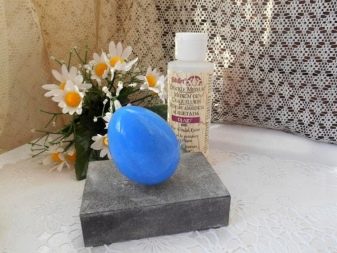
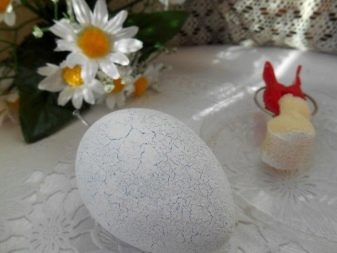
Decoupage eggs can be used not only for eating, they can become part of the interior, because Easter is both a festive feast and a bright spiritual day of Resurrection.
For a master class on decorating Easter eggs using decoupage technique, see the next video.








